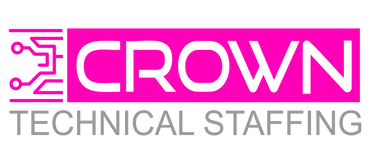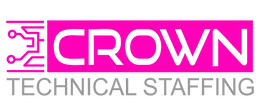As leaders, we’re called to lead human beings. We aren’t leading Engineering Managers, Technical Project Managers, R&D Engineers, Operations Managers, or any other title you can find in a facility. A whole human being is behind the title, and empowering that person to step up to the challenges, solve the problems, and drive results is critical.
As executives and senior leaders, you’re fully aware of the challenges of pushing for new ideas while keeping everything running smoothly. I recently attended the “Technical Leadership Summit,” where ~250 senior executives and business leaders within the manufacturing industry discussed the role of technical leaders and how they’re helping to navigate this tricky balance confidently. We explored real-world strategies that are helping teams embrace fresh thinking without derailing ongoing operations, and in this edition of “Engineering 365”, I’ll be sharing those insights with you.
Who Are Technical Leaders?
A technical leader empowers teams to execute a vision while navigating external constraints. They enable technical experts—such as engineers and technicians—to become effective leaders, even without formal authority. Common titles for these types of leaders are “Engineering Lead, Manufacturing Engineer, Systems Engineer, R&D Manager, Maintenance Manager, etc.” Technical leaders serve as a bridge between their teams and program management, ensuring that the technical work aligns with program objectives and that teams have the necessary resources to succeed. Their role is crucial for their teams’ and organizations’ success and growth. Grabbing market share and growing without the right people in these positions is difficult.
Challenges for Technical Leaders
- Technical leaders often face unique challenges due to the lack of formal authority and traditional leadership opportunities. They must develop leadership skills independently, focusing on influence and inspiration.
- Key Points: There is limited access to traditional leadership development programs. They’ll need to learn to lead through influence without formal managerial roles. Self-directed learning and community engagement are essential.
Six Essential Skills for Exceptional Technical Leadership
1. Listening Vs. Telling
- Bridge technical details with business needs.
- Navigate difficult conversations with empathy and curiosity.
- Focus on coaching skills to inspire and encourage teams.
- Utilize tools like AI for leadership coaching.
2. Relationship Building
- Listen actively and create a trusting environment.
- Seek feedback on relational styles from mentors or coaches.
- Model transparency and accountability.
- Demonstrate vulnerability to foster a supportive team culture.
3. Learning, Evangelism, and Curiosity
- Advocate for time and resources for team development.
- Establish formal mentoring programs, such as the Fastenal Manufacturing Sponsorship Programs, which have an 80% retention rate and emphasize hands-on training.
- Encourage bi-directional mentoring to gain diverse perspectives.
- Engage in community learning and ask insightful questions.
4. Diversity in Thought and Team Dynamics
- Embrace diverse backgrounds and life experiences.
- Foster an inclusive work environment that accommodates different needs.
- Ensure team members feel safe speaking up and contributing.
- Leverage inclusivity to reflect a broader customer base and market.
5. Empowerment
- Provide context and remove obstacles for the team.
- Allow autonomy in problem-solving and execution.
- Use tools like the “Empowerment to Productivity” quiz to assess and improve empowerment skills.
6. Balance
- Map out incremental steps from the current baseline to the future vision.
- Encourage experimentation and pilot projects.
- Engage with peers to explore and implement new technologies and processes.
- Maintain team stability while fostering a culture of creativity.
So, as we sat in a room full of technical leaders and those aspiring to lead in their workplace, we did a quick exercise that I’d like to share with you.
Here is one way to look at fostering or flexing your creative muscle while leading a team.
Take a look at this pair of pliers.

We were tasked with asking as many questions as possible about this pair of pliers. The goal was not to describe it. I want you to get curious. What would you like to know about it? Think about it from different perspectives. Perhaps you have a technical interest in it. Perhaps there’s a perspective of an artist or a child, someone who works in a different industry or culture. What kinds of questions can you come up with?
Actual Examples of Questions Asked By The Audience:
- First, do they come in different colors?
- How much additional force can they contribute?
- How many iterations have they gone through for that design?
- What is their breaking point?
- How much would it hurt if they fell on your toe?
- Are they comfortable to use?
- And then what are they used for?
- Do they make your work easier?
Did you see how everyone approached them from a slightly different perspective and how we looked at them from a functional standpoint, an appearance standpoint, and a performance specification? All great ideas.
This exercise reminds us of the diversity of thought many teams strive for. It’s a politically charged topic. It always is. I want to talk about it in the context of technical leadership. Diversity is important because creative and innovative solutions will come from looking outside of your point of view. People who have diverse backgrounds or life experiences can bring new viewpoints. They’re bringing new clarity to the table.
A new way to look at a pair of pliers.
So, as a technical leader, keep an eye on your team and see where you can benefit from that different viewpoint perspective.
Imagine a team meeting where everyone approaches a problem like we did with that pair of pliers. Each person asks questions you might not have thought of, bringing fresh insights to the conversation. Leading is a bit like that. Seeing beyond titles and tapping into your team’s unique strengths and viewpoints. By embracing diversity and encouraging curiosity, you’re not just solving immediate problems, you’re building a culture where creativity can flourish. So the next time you’re in a tough spot, remember to look at the ‘pliers’ in your hands differently. It might open up a whole new world of possibilities for you and your team.
Did you enjoy reading this post? Please consider clicking the “Like” button and sharing it on LinkedIn, Facebook & Twitter!


